Molar mass 302.11 g/mol | Boiling point 160 °C | |
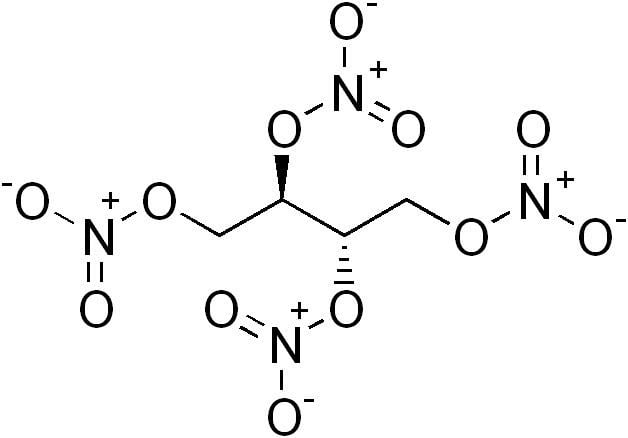 | ||
Erythritol tetranitrate 1 5g
Erythritol tetranitrate (ETN) is an explosive compound chemically similar to PETN. It is however thought to be 1/3 more sensitive to friction and impact. ETN is not well known, but in recent years has been used by amateur experimenters to replace PETN in improvised detonation cord or in boosters to initiate larger, less sensitive explosive charges. Due to the availability of erythritol as a natural sweetener and its relative ease of production in relation to PETN, ETN is a favoured homemade explosive compound to the amateur experimenter.
Contents
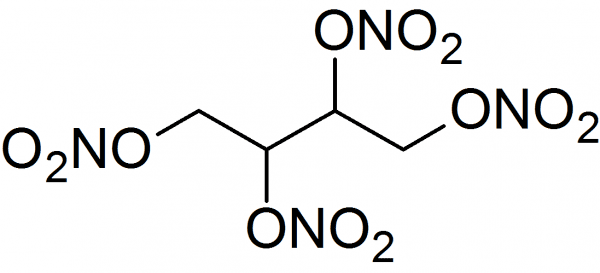
Like many nitrate esters, ETN acts as a vasodilator, and was the active ingredient in the original "sustained release" tablets, made under a process patent in the early 1950s, called "nitroglyn". Ingesting ETN or prolonged skin contact can lead to absorption and what is known as a "nitro headache".
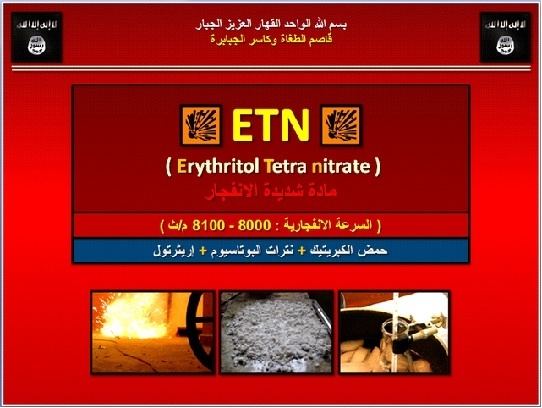
Properties

ETN has a relatively high velocity of detonation of 8000–8100 m/s at a Density of 1.6 g/cm3. It is white in color and odorless. ETN is commonly cast into mixtures with other high explosives. It is somewhat sensitive to shock and friction, so care should be taken while handling. ETN dissolves readily in acetone and other ketone solvents.
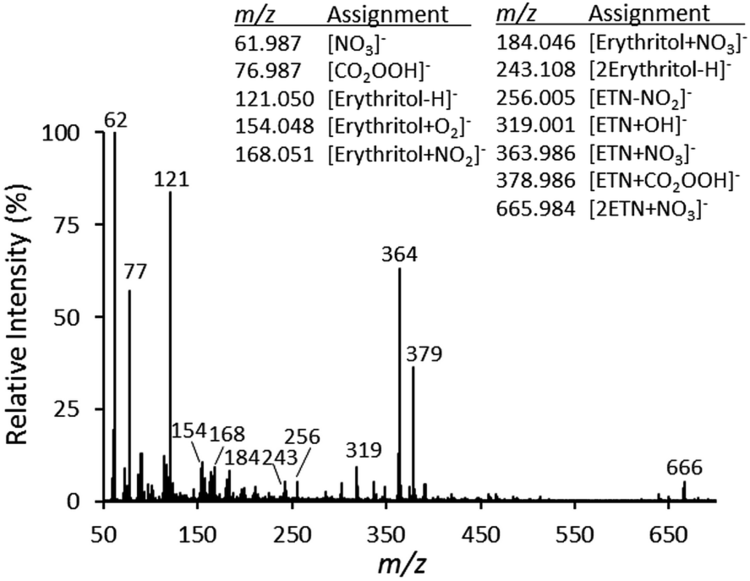
Much like PETN, ETN is known for having a very long shelf life. Studies that directly observed the crystalline structure saw no signs of decomposition after four years of storage at room temperature. ETN has a Melting point of 61 °C, compared to PETN which has a melting point of 141.3 °C. Recent studies of ETN decomposition suggested a unimolecular rate-limiting step in which the O-NO2 bond is cleaved and begins the decomposition sequence.
Oxygen balance

One quality this explosive has, that PETN does not, is a positive oxygen balance. Having a positive oxygen balance means that ETN possesses more than enough oxygen in its structure to fully oxidize all of its carbon and hydrogen upon detonation. This can be seen in the schematic chemical equation below.
2 C4H6N4O12 → 8 CO2 + 6 H2O + 4 N2 + 1 O2Whereas PETN decomposes to:
2 C5H8N4O12 → 6 CO2 + 8 H2O + 4 N2 + 4 CO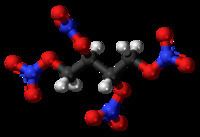
The carbon monoxide (CO) still requires oxygen to complete oxidation to carbon dioxide (CO2). A detailed study of the decomposition chemistry of ETN has been recently elucidated.
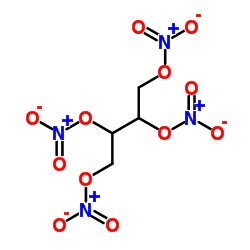
Thus for every two moles of ETN that decomposes, one free mole of O2 is released. This could be used to oxidize an added metal dust or an oxygen deficient explosive such as TNT or PETN.
Manufacture
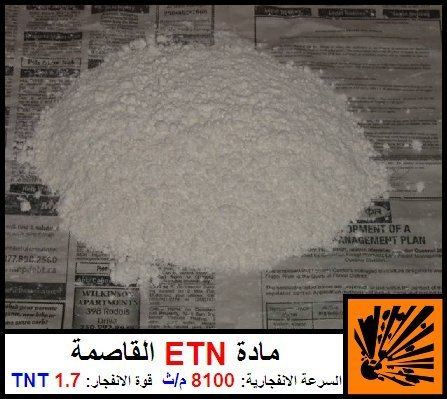
Like other nitrated polyols, ETN is made by nitrating erythritol through the mixing of concentrated sulfuric acid and a nitrate salt. Ammonium nitrate is commonly used for this type of reaction. The erythritol is added to the mixture to begin its nitration. Much better yields can be obtained by using concentrated nitric acid in place of the nitrate salt, in which case the sulfuric acid is used simply to absorb water and act as a catalyst from the resulting esterification, driving the reaction.
